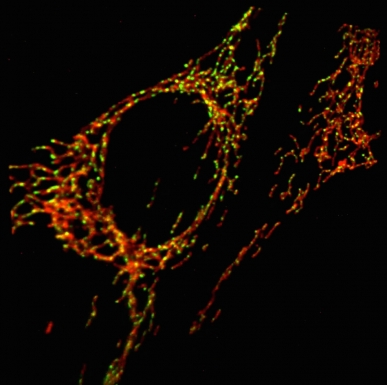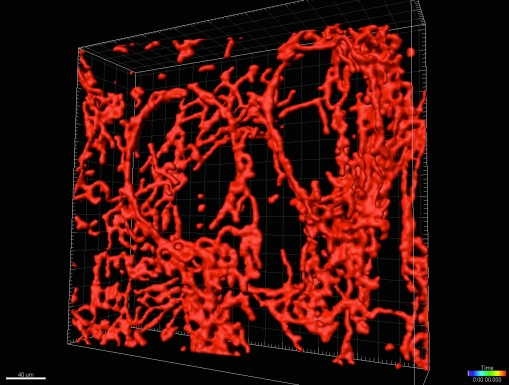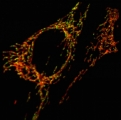A Window into Cell Death
Approximately 100 billion cells in a human body die each day through a controlled process called apoptosis. During apoptosis, the mitochondria – organelles that produce energy – release their DNA into the cytoplasm of the cell, triggering an immune response, as if the cell were infected with a virus. To squelch the response, the cell produces molecules critical to the silencing process called caspases.
Benjamin Kile, of Australia’s Walter and Eliza Hall Institute of Medical Research (WEHI), is interested in identifying the molecular events underlying this apoptotic immune response. His team had done genetic and pharmacological studies to understand the process, but what they really wanted was to look inside a dying cell. Working with Janelia’s application scientists, Kile and his team have twice used the lattice light sheet microscope at Janelia’s AIC to watch this process in action. The data have been so remarkable that they are building a lattice light sheet microscope of their own at WEHI.
“Actually seeing what was going on has transformed my understanding,” said Kile. “Seeing it has opened up so many possibilities in terms of new questions and new approaches, and we are totally captivated. It’s been an absolute revelation, scientifically.”
About the AIC
The AIC has served as an ideal platform for researchers to test out their novel ideas with emerging microscopy technologies.
Read Our Alumni Stories
Join our Mailing List
Join our mailing list to be notified when calls for proposals open.





